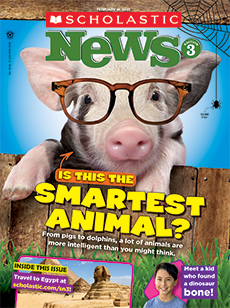Multilingual Learners
Support multilingual learners by discussing the meaning of the article title, “Go for the Goal!” Explain that when we “go for” something, we try to have it or get it. In sports like lacrosse, the expression “go for the goal” means to try to score.
Writing Activity
Point out the action verbs in the text (e.g., sprints, carries, flings, flies, and ran). Have students use lively action verbs to write about a tradition in their own family.
Small Group Activity
Guide students to notice the nonfiction text features of this article: headline, subheadings, photos, captions, sidebar, and boldfaced words. Discuss how each helps students understand the text.
Paired Texts
Pair this article with other texts and videos from our archives. Find them in the Celebrating Native American Heritage text set.
